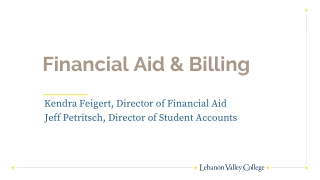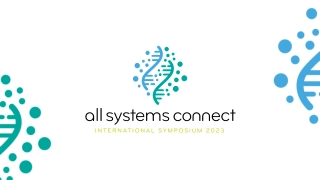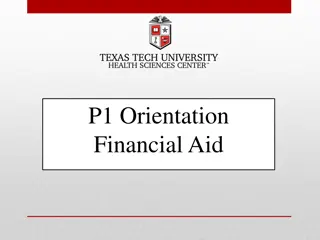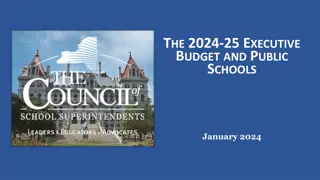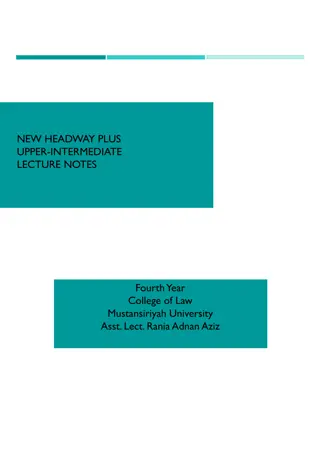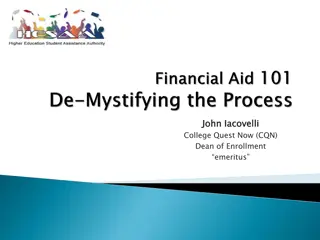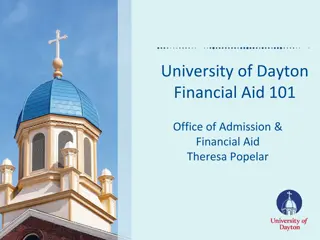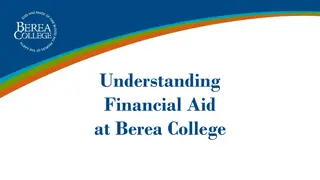
Understanding Financial Aid for College Students
Financial aid is crucial for students and families to afford postsecondary education. Learn about sources, application procedures, FAFSA, ways to file, and important tools like the FSA ID and IRS Data Retrieval Tool.
Download Presentation

Please find below an Image/Link to download the presentation.
The content on the website is provided AS IS for your information and personal use only. It may not be sold, licensed, or shared on other websites without obtaining consent from the author. If you encounter any issues during the download, it is possible that the publisher has removed the file from their server.
You are allowed to download the files provided on this website for personal or commercial use, subject to the condition that they are used lawfully. All files are the property of their respective owners.
The content on the website is provided AS IS for your information and personal use only. It may not be sold, licensed, or shared on other websites without obtaining consent from the author.
E N D
Presentation Transcript
What is Financial Aid? Financial aid consists of funds provided to students and families to help pay for postsecondary educational expenses.
Sources of Financial Aid Federal Government Employers States Private Sources College and Universities
How to Apply for Financial Assistance
FSA ID An FSA ID gives you access to Federal Student Aid s online systems and serve as your legal signature. Both the student AND a parent need to create one. Will be used throughout the aid process, including subsequent years. https://fsaid.ed.gov
Free Application for Federal Student Aid (FAFSA) MUST be filled to receive federal aid Required for some state and institutional as well A standard federal form that collects demographic and financial information about student and family May be filed at any time during an academic year, but no earlier than the October 1st prior to the academic year for which the student requests aid
Ways to file the FAFSA FAFSA on the Web (FOTW) myFAFSA via myStudentAid mobile app Paper (PDF) FAFSA FAFSA on the Phone (FOTP) FAA Access to CPS Online
FAFSA can now be completed on an app!
FAFSA: Prior-Prior Year Starting October 1, 2020, students can begin FAFSA for 2021-22 academic year using prior year info. 2019 Tax Info
IRS Data Retrieval Tool (IRS DRT) The IRS Data Retrieval Tool allows students and parents to access the IRS tax return information. Transfer the data directly into their FAFSA from the IRS Web site.
Whos data is entered? Student Demographic Income if earned Parent All parents in the household
How is all of this information used?
What is the Expected Family Contribution (EFC)? Calculated by formula in FAFSA Stays the same regardless of college Amount a family can reasonably be expected to contribute per academic year of education
High Impact Information & EFC Tax Info AGI, Taxes, Earnings Current Financial Info Cash/Savings, Investments, Business/Farm income Number in Household Number in College Untaxed Income
CSS Profile CollegeBoard Financial reporting Used to determine need for institutional aid Uses 2 years of financial data Includes private assets in EFC calculation Fee for initial application and one college report is $25. Additional reports are $16. Used by approx. 400 colleges and scholarship programs Only 3 in MD
How do schools use this data?
What is Cost of Attendance (COA)? Direct costs Tuition Fees Room Board Indirect costs Books Transportation Personal Expenses Loan Fees Cost of Attendance
What is Financial Need? Expected Family Contribution (EFC) Financial Need Cost of Attendance
Categories of Aid Need-based aid Non-need- based aid
Types of Aid Loans Scholarships Self-Help Aid Gift Aid Work-Study Employment Grants
Institutional Funding Scholarships Awarded for student achievement regardless of financial need Universities will have separate scholarship applications for the different colleges Grants Need based funds offered to assist in covering CoA
State Funding An only be used for MD schools Aid is awarded on the basis of both merit and need FAFSA is required for some March 1, 2021 For MD funding check Maryland Higher Education Commission (MHEC) www.mhec.state.md.us Legislative Scholarships www.mdelect.net
Outside Scholarships Scholarship search engines Fastweb Scholarships.com Cappex Scholly Niche Scholarship Monkey Scholarships are everywhere
Loan Types Stafford Loans Student Loans Subsidized Unsubsidized PLUS Loans (Parent) Private Source Loans Banks Credit Unions Private Loan Servicer
Subsidized VS. Unsubsidized Direct Subsidized Loans are available to undergraduate students with financial need. Your school determines the amount you can borrow, and the amount may not exceed your financial need. The U.S. Department of Education pays the interest on a Direct Subsidized Loan while you re in school at least half- time, for the first six months after you leave school during a period of deferment Direct Unsubsidized Loans are available to undergraduate and graduate students. Your school determines the amount you can borrow based on your cost of attendance. You are responsible for paying the interest on a Direct Unsubsidized Loan during all periods. If you choose not to pay the interest while you are in school and during grace periods, your interest will accrue and be capitalized
Loan fees change every year. Example: 1.059% $5500 loan fees= $58.25 Total amount credited to your account= $5441.75
Rates for 2021 and beyond will change annually. Interest rates are fixed for the life of the loan.
Special Circumstances Conditions exist that cannot be documented with the FAFSA Send written explanation and documentation to your college s financial aid office College will review and request additional information if necessary
Secondary school tuition Unusual uncovered medical/dental expenses Extraordinary dependent care Parent or spouse death Loss of employment Divorce
Financial Aid Packages Early Decision/Action Applicants Regular Decision Financial Aid Packages included in admit packet Should include (if eligible) Federal Grants State Grants Institutional Need Based Grants Institutional Scholarships Federal Loan options
Tools You Can use Federal Student Aid https://studentaid.gov FAFSA4Caster Help to get an idea of EFC/Need College Cost Worksheet Net Price Calculators (NPC) Every Title IV school is required to have one
Questions? Contact Info: www.smcm.edu/osfa osfa@smcm.edu

